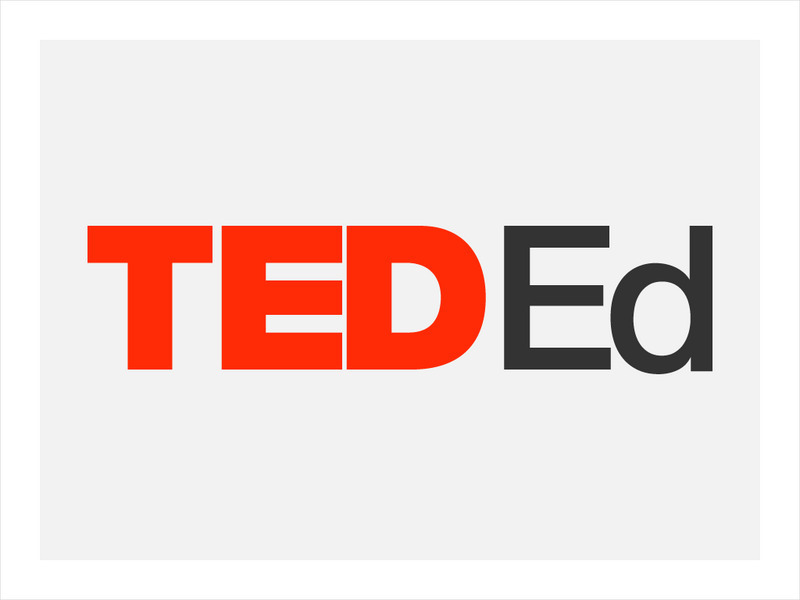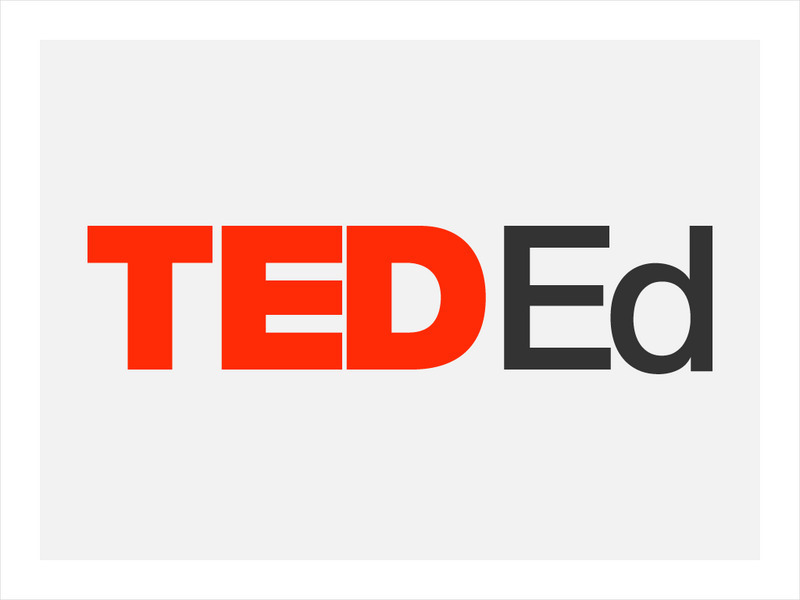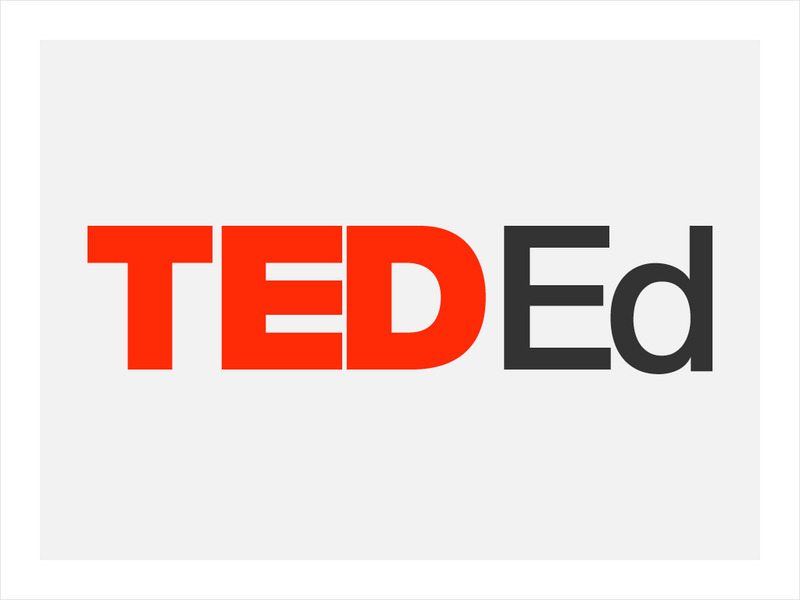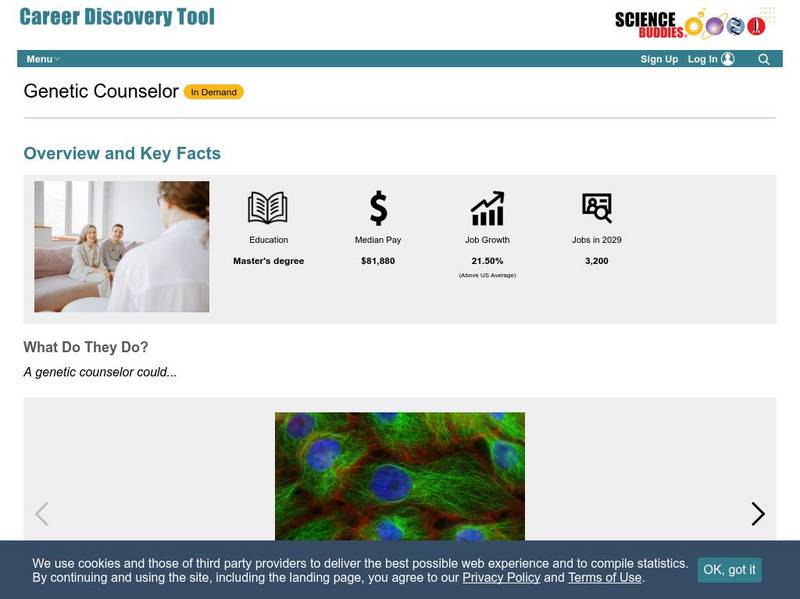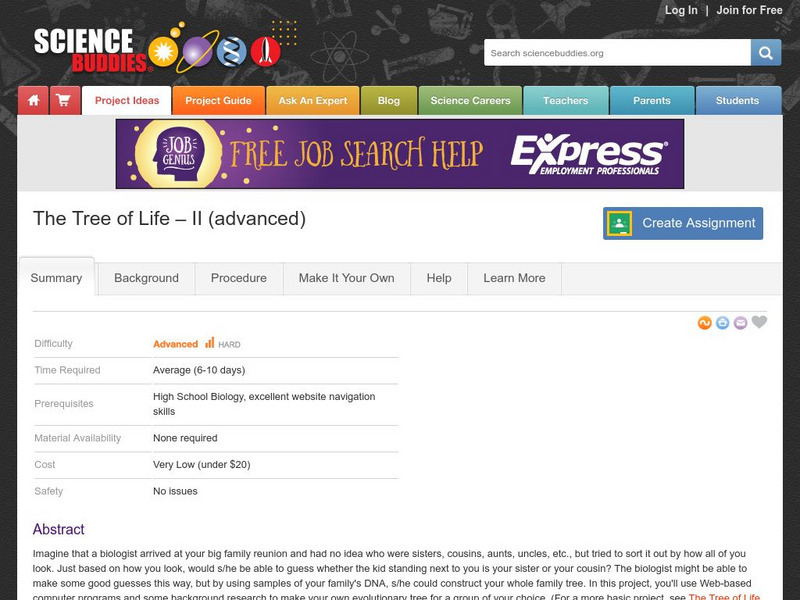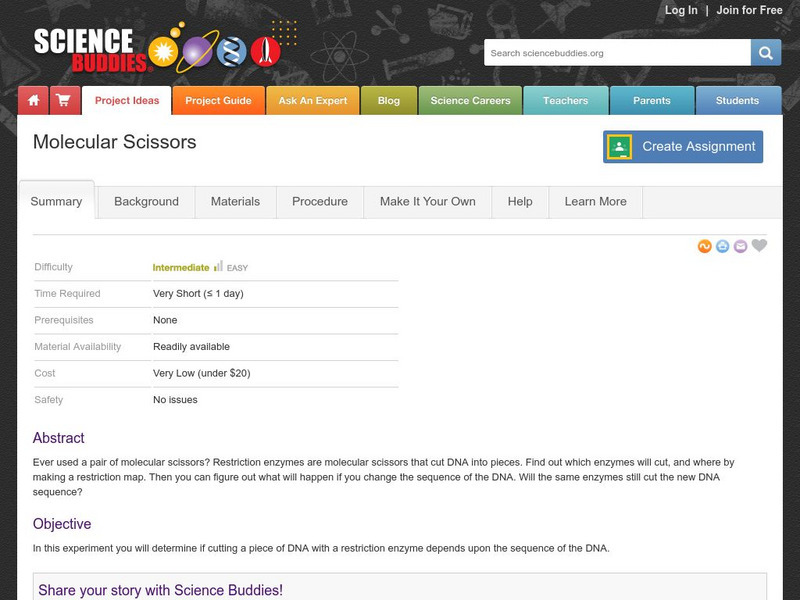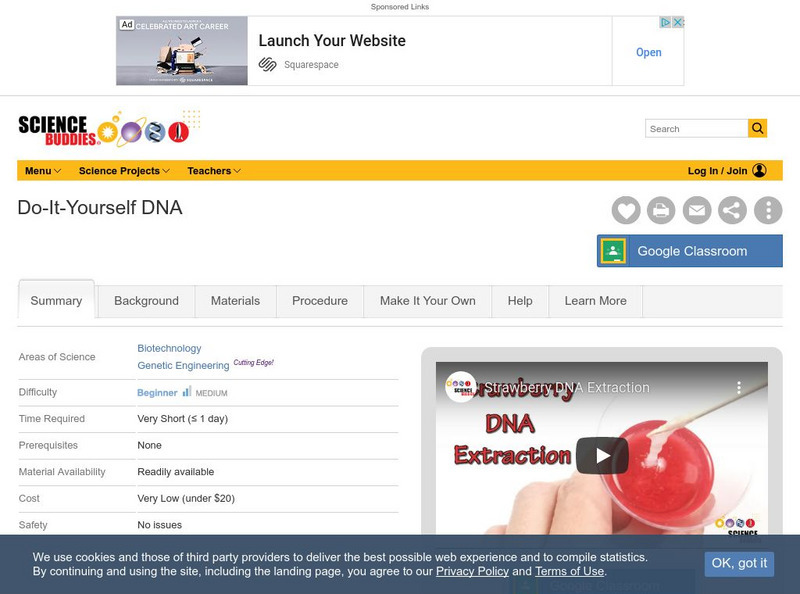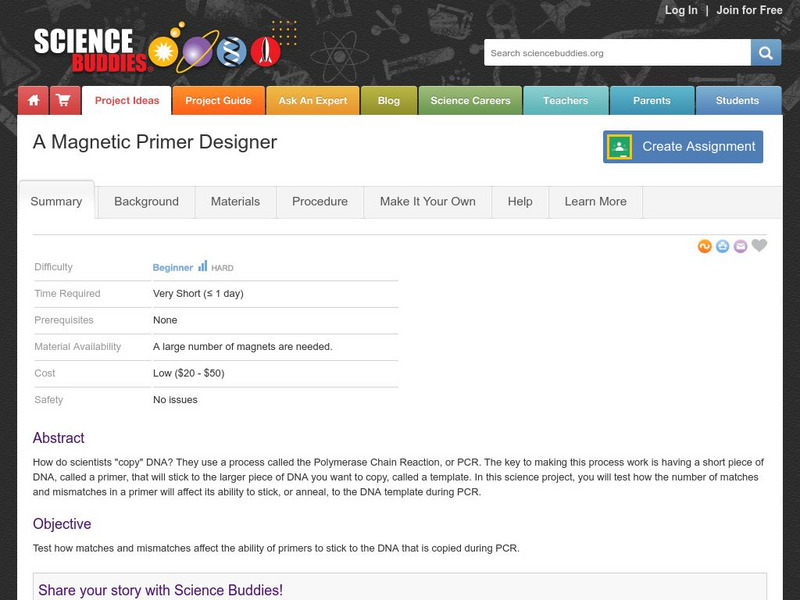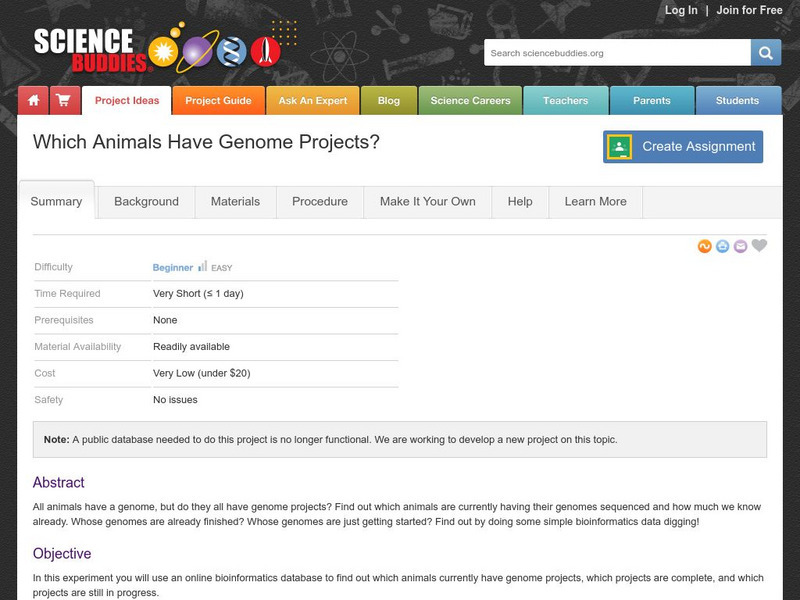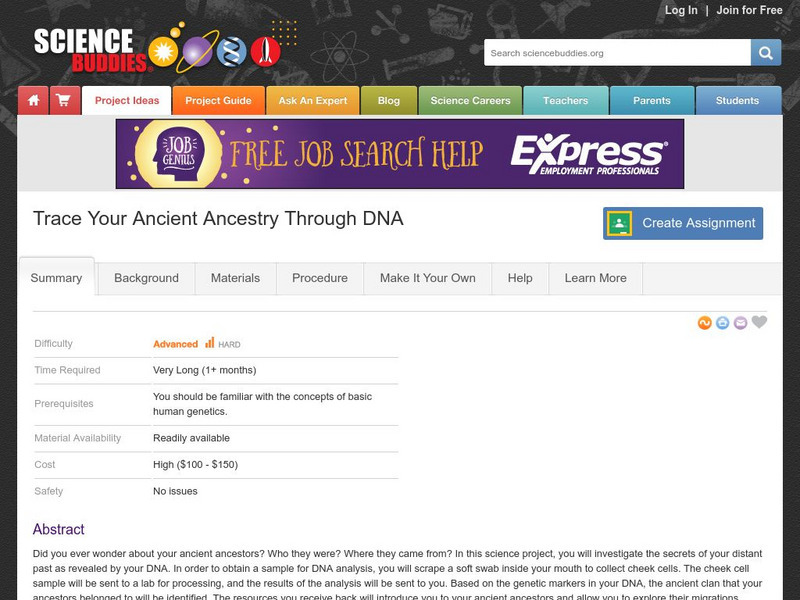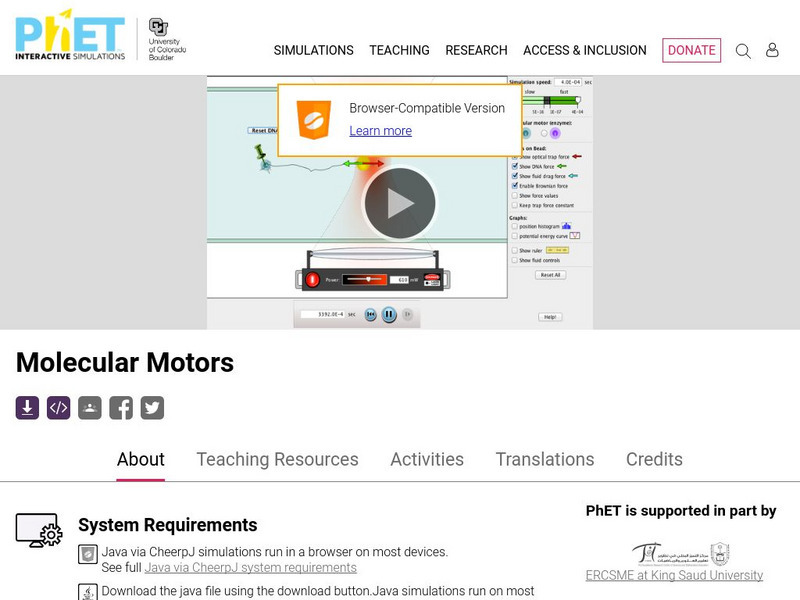PBS
Pbs Learning Media: The Sequencing Race Begins
This video segment from NOVA: "Cracking the Code of Life" looks at one of the key players in the race to decode the human genome.
PBS
Pbs Learning Media: Forensic Dna Analysis
This video segment from NOVA: "The Killer's Trail" investigates the potential for DNA evidence to solve murder cases, even those from the distant past.
University of Washington
Uwmc Cytogenetics Laboratory: Cytogenetics Gallery
This site opens with an excellent introduction to Cytogenetics. Explore this site to learn about chromosomes, human karyotypes and more.
TED Talks
Ted: Ted Ed: Evolution in a Big City
Video explains how mice, coyotes, and newts can show signs of evolution, even in a big city such as New York. [5:16] Includes a brief quiz and a list of additional resources to explore.
TED Talks
Ted: Ted Ed: The Twisting Tale of Dna
Video describing the structure and function of the DNA molecule. [4:27] Includes a short quiz and a list of additional resources to explore.
TED Talks
Ted: Ted Ed: What Happens When Your Dna Is Damaged?
The DNA in just one of your cells gets damaged tens of thousands of times per day. Because DNA provides the blueprint for the proteins your cells need to function, this damage can cause serious issues-including cancer. Fortunately, your...
TED Talks
Ted: Ted Ed: How to Sequence the Human Genome
Your genome, every human's genome, consists of a unique DNA sequence of A's, T's, C's and G's that tell your cells how to operate. Thanks to technological advances, scientists are now able to know the sequence of letters that makes up an...
Science Buddies
Science Buddies: Career Profile: Genetic Counselor
Read the career profile of the genetic counselor, who spends time with patients advising them of their options when deciding about the risks of genetic disease. Science Buddies lays out the educational requirements as well as the job...
Science Buddies
Science Buddies: Extracting Onion Dna
In this project, you'll learn how to isolate DNA from onion cells, separating it from other cellular components in a manner that still preserves its structure and sequence. In the end, you'll have enough DNA to see with the unaided eye,...
Science Buddies
Science Buddies: The Tree of Life Ii (Advanced)
Imagine that a biologist arrived at your big family reunion and had no idea who were sisters, cousins, aunts, uncles, etc., but tried to sort it out by how all of you look. Just based on how you look, would s/he be able to guess whether...
Science Buddies
Science Buddies: Computational Exploration of Protein Function
The DNA in our cells contains our "blueprints," but it's the proteins in our cells that do most of the work. The Human Genome Project has allowed us to start reading the blueprints, but we still don't understand what most of the proteins...
Science Buddies
Science Buddies: Forensic Science: Building Your Own Tool for Identifying Dna
When biologists want to separate different pieces of DNA, RNA, or proteins they use a technique called gel electrophoresis. In this science project you'll build a gel electrophoresis chamber and use it to discover how many components are...
Science Buddies
Science Buddies: The Tree of Life I (Basic)
Imagine that a biologist arrived at your big family reunion and had no idea who were sisters, cousins, aunts, uncles, etc., but tried to sort it out by how all of you look. Just based on how you look, would s/he be able to guess whether...
Science Buddies
Science Buddies: Learning Your A, G, C's (And T, Too)
This is a project about the "molecular alphabet" of DNA. With just four "letters," it manages to keep track of the plan for an entire person, and keep a complete copy in nearly every cell. This project will help you start learning this...
Science Buddies
Science Buddies: Molecular Scissors
Ever used a pair of molecular scissors? Restriction enzymes are molecular scissors that cut DNA into pieces. Find out which enzymes will cut, and where by making a restriction map. Then you can figure out what will happen if you change...
Science Buddies
Science Buddies: Do It Yourself Dna
All living things have DNA inside their cells. In this experiment you can make your own DNA extraction kit from household chemicals and use it to extract DNA from strawberries.
Science Buddies
Science Buddies: What Makes a Dna Fingerprint Unique?
Do you like solving mysteries? In this experiment, you can find out how a DNA fingerprint can help you figure out whodunit. The answer might just be in the "sequence" of events.
Science Buddies
Science Buddies: A Magnetic Primer Designer
How do scientists "copy" DNA? They use a process called the Polymerase Chain Reaction, or PCR. The key to making this process work is having a primer that will stick to the piece of DNA you want to copy, called a template. In this...
Science Buddies
Science Buddies: Which Animals Have Genome Projects?
All animals have a genome, but do they all have genome projects? Find out which animals are currently having their genomes sequenced and how much we know already by performing some simple bioinformatics data digging.
Science Buddies
Science Buddies: How Much Dna Can You Pack Into a Cell?
This project asks you to find out just how much DNA can be fit into a cell. Whether animals with a bigger genome need a larger cell nucleus to store its DNA is uncertain. However, by trying your hand at this science project you can find...
Science Buddies
Science Buddies: Trace Your Ancient Ancestry Through Dna
In this science project, you will investigate the secrets of your distant past as revealed by your DNA. In order to obtain a sample for DNA analysis, you will scrape a soft swab inside your mouth to collect cheek cells. Based on the...
Science Buddies
Science Buddies: What Is the Woolly Mammoth's Closest Living Relative?
Although Woolly Mammoths have been extinct for thousands of years, scientists continue to learn more and more about this mighty animal. Some of the most exciting new research is being produced by looking at DNA extracted from the hair...
University of Colorado
University of Colorado: Ph Et Interactive Simulations: Gene Machine the Lac Operon
Build a gene network! The lac operon is a set of genes which are responsible for the metabolism of lactose in some bacterial cells. Explore the effects of mutations within the lac operon by adding or removing genes from the DNA.
University of Colorado
University of Colorado: Ph Et Interactive Simulations: Molecular Motors
Discover what controls how fast tiny molecular motors in our body pull through a single strand of DNA. How hard can the motor pull in a tug of war with the optical tweezers? Discover what helps it pull harder. Do all molecular motors...





